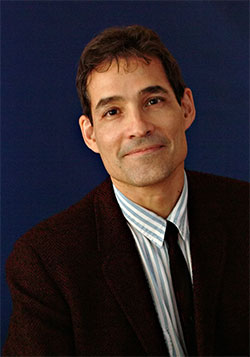Filed Under > Quoted & Noted
Bonanno Speaks With Toronto Newspaper About Chilean Miners Trapped Far Underground
TC's grief and resilience expert tells Globe and Mail that communication is essential to the survival of 33 trapped miners.
This article is reprinted from the Guardian News Service
CHILEAN MINING ACCIDENT
First video of miners radiates hope from the deep
Saturday, August 28, 2010
SARAH BOESVELD
They waved, they clapped, they looked up from game of dominoes. The first grainy video footage of 33 Chilean miners trapped since Aug. 5 demonstrates a mechanism to stay alive and show their loved ones that hope is not lost, says George Bonanno, who studies resilience at Columbia University Teachers College in New York. Sarah Boesveld reports on the lessons in psychological survival that can be gleaned as the world bears witness to what could become the longest underground rescue mission yet, expected to last until Christmas
THE LETTERS
Workers reassured their families via letters and the video camera sent down the mine shaft. Eventually, they'll have a teleconferencing system to help them conduct daily chats. That regular communication is crucial for their psychological health, Dr. Bonanno says. "It's immeasurably important." They'll also have the strong urge to share details of that communication, something they wouldn't likely do if they weren't in crisis, he says. The men are also trying to maintain their regular family roles from their place underground. Worker Jony Barrios told his wife: "Make sure the company pays my salary."
THE SOCIAL SPHERE
Some workers flail their arms at the camera while others stand quietly in the background. The leaders and the followers are already evident in the footage, Dr. Bonanno says. To prevent violence, competition and backlash as factions emerge and leaders take the helm, "they'll have to really co-operate to a great extent," Dr. Bonanno says. That can be tough for a group of men who are hard wired to "duel each other," he says. And it will be harder on the group if some are more distressed than others, he adds. These workers may be at an advantage since they knew each other as colleagues prior to the disaster, he says. They may already know and respect the leaders among them.
THE CELEBRITY
After the hopeful end of their entrapment, the survivors will forever be known for outliving their ordeal. The presence of cameras may help them hold out hope, not only to see their families again, but to gain glory and a bit of cash, Dr. Bonanno suggests. "Celebrity today is a cash product," he says. "These guys have to be aware that they're on television." They were also told how long they can expect to be underground, which, strangely, can work to put them at ease, Dr. Bonanno adds. They may be better prepared, psychologically, if they know the rest of the world will hear about and celebrate their rescue.
THE DOMINOES
The sweaty, shirtless miners need to play games to keep their minds off their plight, Dr. Bonnano says. "We worry, and worries can activate those primitive responses" that could prove dangerous to the group, he says. "Focusing on even very mundane things can help." Reports say the miners are also entertaining themselves by watching soccer games and running through the cavernous hallways in the two-kilometre space. In part of the video, a page ripped from a porn magazine can be seen on a table.
THE LAUGHTER
As the video ends, the workers sing the Chilean national anthem. They smile, chant and tell their loved ones jokes. Laughter eases worry and creates a sense of togetherness, says Dr. Bonanno, who looks at humour in coping as part of his studies on resilience. "Genuine humour is very cohesive-building, it helps people feel connected to each other," he says. But the funnies can lose their effect if someone becomes the butt of the joke or the humour otherwise threatens that cohesiveness, he says. "Sources of humour are going to grow thin over time."
With a report from the Guardian News Service
Published Wednesday, Sep. 1, 2010
